Discovering the Unique Birthstone for February 29th
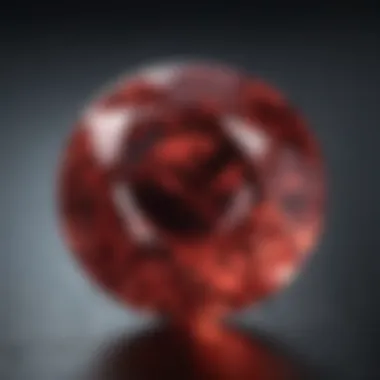
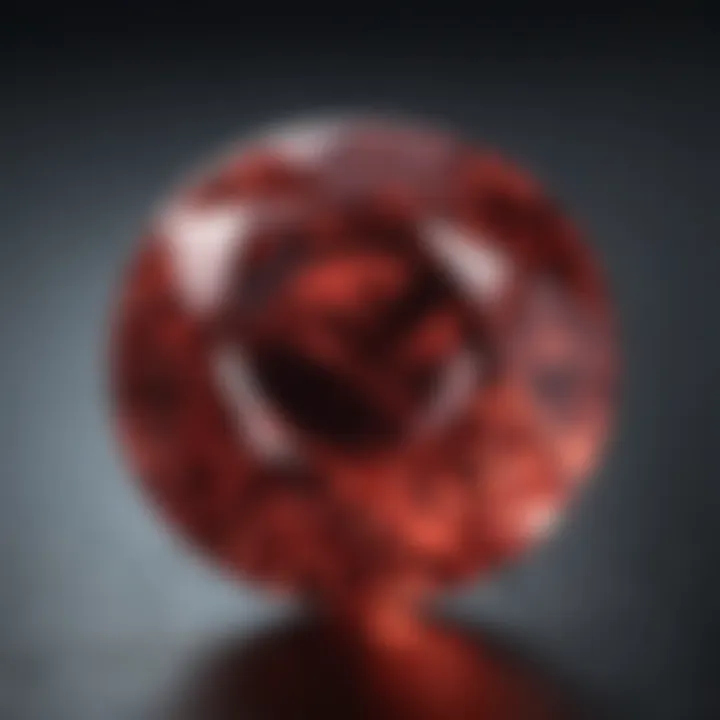
Intro
The birthstone associated with February 29th is quite unique, as it aligns with a rare date that only occurs once every four years. This rare day is often linked with individuals who possess a fascinating distinction, as they are considered leap year babies. Understanding this birthstone encompasses more than just its visual appeal; it extends to its historical significance, physical properties, and cultural implications.
As we delve into this topic, various aspects will unfold. This exploration will include an overview of the gemstone's definition, its origins, and the unique qualities that distinguish it. We will also look at the historical importance of the birthstone and its characteristics, including aspects such as hardness and color.
To enhance our readers' appreciation and understanding of this remarkable gem, we will investigate its applications in jewelry, its role in crystal healing, and its intriguing cultural implications. By synthesizing this multifaceted information, we aim to provide a comprehensive guide for gemstone enthusiasts, collectors, jewelry designers, and geology aficionados.
Gemstone Overview
Definition and Origins
The birthstone for February 29th is predominantly considered to be jasper, a form of chalcedony that has been used for millennium as a decorative stone. Known for its rich colors and intricate patterns, jasper has gained a reputation among jewelers and collectors alike. Its origins can be traced back to ancient civilizations, where it was valued for both its beauty and its perceived healing properties.
Historical Significance
Throughout history, jasper has been used for various purposes. Ancient Egyptians carved it into amulets, believing it offered protection and strength. Cultures around the world have viewed jasper as a stone of endurance, often associated with the energy of the earth.
"Jasper is revered not just for its aesthetics but also for its grounding qualities, offering balance and stability to those who wear it."
Jasper’s historical significance thus offers a lens into its value beyond the mere physical. The uniqueness of leap year births adds another layer of significance to this gemstone. The rarity of both the birth date and the stone creates a special narrative that resonates with those born on February 29th.
Gemstone Properties
Hardness and Durability
In the Mohs scale of mineral hardness, jasper ranks around 6.5 to 7. This makes it a relatively durable stone, capable of withstanding everyday wear when set in jewelry. Though it is not the hardest gem available, its toughness ensures it remains an attractive option for many jewelry designs, including rings and pendants.
Color and Clarity
Jasper is known for its rich variety of colors, ranging from deep reds to earthy greens and striking yellows. Each piece of jasper is unique, featuring a distinctive pattern that often tells a story of its own. The clarity of jasper varies, with some stones displaying opaque finishes and others exhibiting translucent effects, depending on the specific type of jasper.
Preface to February 29th
February 29th stands as a remarkable date in the calendar, occurring only once every four years. This infrequent occurrence makes it a topic of interest not just for those born on this day, but also for many who seek to understand the unique attributes tied to leap year individuals. The significance extends beyond mere rarity; it encompasses a blend of cultural, historical, and astronomical factors that enrich the discussion.
The depth of interest surrounding February 29th can particularly enhance our understanding of birthstones. A birthstone associated with this special date carries with it unique vibrations and meanings, carefully intertwined with the individuals who bear them. Delving into the characteristics, properties, and cultural relevance of the February birthstone provides insight into the broader implications of the date itself.
In this article, we explore several key elements regarding February 29th and its birthstone, shedding light on how these facets come together to shape a distinct identity. We will examine how leap years affect timekeeping, understand the historical significance of birthstones, and appreciate the cultural narratives that surround them. By doing so, we aim to enrich the reader's knowledge and appreciation of this extraordinary date and the gem linked to it.
Understanding Birthstones
The exploration of birthstones holds great significance in the context of personal identity and cultural heritage. Birthstones are more than just gems; they represent certain attributes and qualities believed to enhance the characteristics of individuals born in specific months. For those born on February 29th, the importance of their birthstone takes on an added layer of uniqueness due to the rare nature of their birth date.
This article aims to deepen our understanding of birthstones, particularly for February 29th birthdays. By analyzing historical perspectives and cultural meanings, readers can appreciate the depth and diversity of thought surrounding these stones. The process of linking a gemstone to a month provides not only a sense of individuality but also invokes a connection to tradition. Moreover, birthstones can serve as talismans, guiding the wearer in their journey through life. Recognizing the significance of these stones is crucial for those in fields such as jewelry design, gemology, and cultural studies.
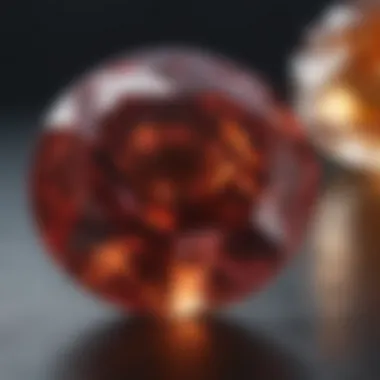
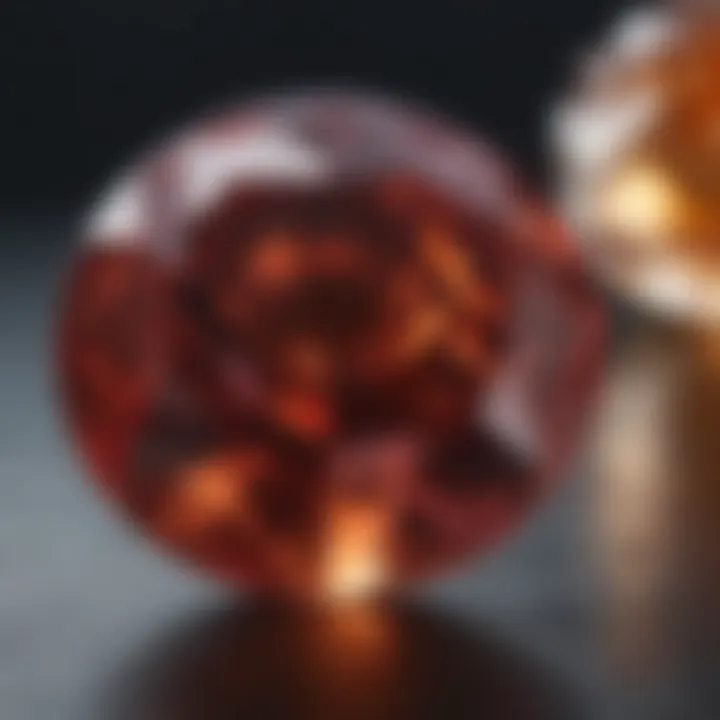
Historical Overview of Birthstones
The concept of birthstones dates back to ancient history. Historical records suggest that the origins can be traced to biblical times, particularly in the Book of Exodus. The twelve stones set in the breastplate of the High Priest are believed to correspond to the twelve tribes of Israel, and later, the twelve months of the year. Over the centuries, different societies ascribed varying properties to each stone, enhancing their significance.
In modern times, the official list of birthstones, promoted in 1912 by the American National Retail Jewelers Association, seeks to standardize the gems associated with each month. Amethyst is widely recognized as the birthstone for February. It is valued not only for its visual appeal but also for its purported healing properties. Historically, it has symbolized sobriety and clarity, making it more than just a decorative piece.
Cultural Significance
Culturally, birthstones serve diverse roles across societies. Different cultures associate specific beliefs with gemstones. For instance, in various traditions, amethyst has been linked to royalty and is believed to enhance intuition as well as spiritual awareness. Its historical use among clergy and leaders emphasizes its dignity and prestige.
In contemporary society, birthstones have continued to represent personal identity. People give and receive birthstone jewelry as meaningful gifts that celebrate connections with friends and family. The practice fosters a sense of belonging and continuity across generations.
Furthermore, several cultures integrate birthstones into rituals and celebrations, underscoring their importance. For people born on February 29th, the amethyst may also reflect the rarity of their birth date, highlighting their individuality. As society evolves, the significance of gemstones continues to adapt, merging history with modern interpretations that resonate with personal experiences.
The birthstone encapsulates not only aesthetic beauty but also historical and cultural narratives that evolve over time.
In summary, understanding birthstones provides profound insight into human identity and tradition. The familiarity with one’s birthstone fosters connections to history, culture, and even the universe, making it a rich topic worthy of exploration for enthusiasts, collectors, and designers alike.
The Birthstone for February 29th
The birthstone for individuals born on February 29th is an essential focus in this article. This topic is of great significance due to its relation to a unique date that comes only once every four years. The rarity of leap years adds to the charm that surrounds the associated gemstone.
The February birthstone is amethyst, a stone revered for its rich history and vibrant hue. Understanding this connection enhances appreciation not only for those celebrating birthdays on leap day but also for gemstone enthusiasts and collectors alike. The benefits of knowing the qualities and cultural significance of amethyst can enrich one’s personal or professional approach to gemology, jewelry design, and collection.
Identifying the February Birthstone
Amethyst, a member of the quartz family, is the officially recognized birthstone for February. Its deep purple color, varying from light lavender to dark violet, makes it a popular choice in various types of jewelry. Amethyst has captivated humans for centuries due to its beauty and supposed mystical properties.
Gem enthusiasts and jewelers regard amethyst as not only a birthstone but also as a gemstone used in various designs, adding elegance and meaning to each piece. The stone’s historical use in crowns and royal adornments demonstrates its proud legacy.
Properties of the February Birthstone
Color Characteristics
Amethyst is known for its distinctive purple color. The intensity of this hue is influenced by various factors, including the iron content within the crystal structure. This characteristic makes amethyst a sought-after gem among jewelry designers. This rich purple can evoke feelings of calmness and tranquility, making it appealing for both personal adornment and decorative pieces.
The color's popularity also contributes to its market value. Lighter shades are often more affordable, while deeper, more vibrant amethyst commands a higher price. The shade of purple chosen can influence the perception and emotional response to the jewelry piece.
Physical Properties
Amethyst possesses notable physical properties. It ranks a 7 on the Mohs hardness scale, making it durable enough for everyday wear. It is relatively resistant to scratching, which is beneficial for various jewelry settings, including necklaces, rings, and earrings.
Additionally, amethyst displays a vitreous luster, giving it a beautiful shine. This unique feature enhances its visual appeal. However, when exposed to prolonged sunlight, amethyst may fade, which is a consideration for care and maintenance.
Metaphysical Attributes
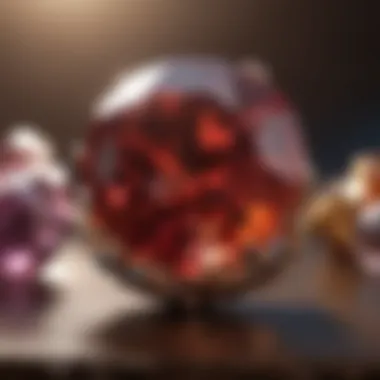
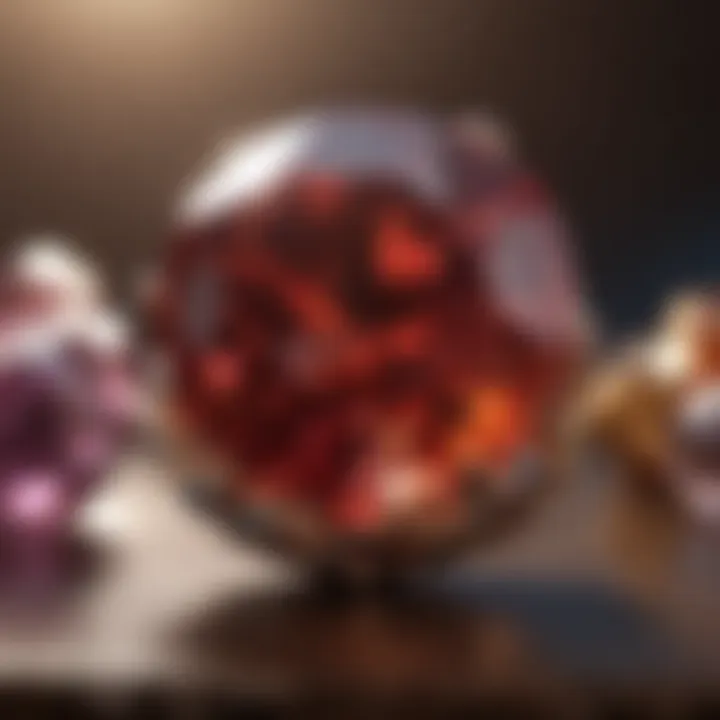
Metaphysically, amethyst is often associated with properties such as balance, peace, and clarity. It is thought to help in meditation and assist in achieving a higher state of consciousness. Individuals seeking emotional stability may find comfort in wearing or carrying amethyst.
The unique feature of amethyst is its alleged ability to ward off negative energies. This attribute adds a layer of meaning for those who incorporate gemstones for spiritual purposes. However, users should be mindful that the effectiveness of metaphysical properties varies greatly among individuals; therefore, personal experience is vital in assessing their value.
"Amethyst remains a favorite not only as a birthstone but also for its rich array of properties and meanings, making it a prominent choice for many jewelry lovers."
Understanding the characteristics of the February birthstone aids in selecting the right piece for oneself or others. It informs buyers of the practical aspects and emotional benefits that amethyst can provide.
Gemstone Lore and Myths
Gemstone lore and myths serve as a fascinating bridge between culture, belief, and the intrinsic qualities of gems. The birthstone associated with February 29th, which is amethyst, carries with it a plethora of legends and lore that enhance its allure. For those individuals born on this rare date, these stories may resonate personally, offering a deeper connection to their birthstone.
Understanding gemstone lore is not just about storytelling. It enables individuals to appreciate the attributes and significance of their stones on a multifaceted level. Myths surrounding gemstones can influence how they are viewed and utilized across different cultures. They enhance the emotional and symbolic aspects attached to the gemstones, be it in jewelry, healing practices, or personal significance.
"Gemstones have not just been viewed as beautiful objects, but as vessels of energy and conduits for intentions and healing throughout history."
Legends Surrounding February Birthstone
The amethyst has long been associated with various legends. In ancient Greece, it was believed that the stone could prevent intoxication. Legend tells of a beautiful maiden who caught the attention of the wine god Dionysus. Angered by the rejection, he threatened to unleash his tigers upon her. The maiden prayed for protection, and the gods transformed her into a clear quartz. Upon seeing her plight, Dionysus wept, and his tears stained the quartz purple, giving birth to the amethyst. This story highlights the intricate relationship between love, protection, and the metaphysical properties that the stone is believed to hold.
In other cultures, amethyst is said to offer tranquility and enhance clarity. Ancient Egyptians used amethyst in their burial artifacts, believing it would protect the deceased in the afterlife. This connection to spirituality makes it a meaningful gemstone for those who cherish its historical context.
Folklore and Stories
Folklore surrounding amethyst varies worldwide, often tied closely to themes of protection, healing, and purification. Many cultures regard amethyst as a guardian stone, believed to ward off negativity and promote emotional balance.
In medieval Europe, it was said that amethyst could deter the effects of sorcery. Those who wore amethyst could feel safe from harm and deceit. It was not uncommon for amulets and talismans to feature this gemstone, serving as a shield against malevolent forces. The belief in its protective qualities is still embraced by many today.
Additionally, amethyst's historical ties to royalty add to its prestige. It has adorned the crowns and scepters of kings and queens for centuries. This legacy shapes the birthstone's aura of nobility, making it a popular choice among discerning jewelry collectors and enthusiasts.
Utilization in Jewelry
The utilization of the February birthstone in jewelry carries significant weight for both personal expression and cultural representation. The stone is often valued not only for its unique beauty but also for the symbolism it holds. Choosing to wear or gifted jewelry made with this birthstone can create a personal connection to one's identity and birthdate. Many individuals celebrate their leap year birthdays by incorporating their stone into jewelry designs that are meaningful and special.
Common Jewelry Settings
Rings
Rings featuring the February birthstone are particularly popular due to their versatility and symbolism of eternity. This type of jewelry serves both aesthetic and sentimental purposes. A key characteristic of rings is the ability to personalize them. Engraving a message or choosing a custom setting can make a ring a treasured keepsake. The unique feature of a ring is that it can be worn every day or on special occasions, making it a significant piece in any collection.
One advantage of rings with the February birthstone is the range of styles available, from classic solitaires to more elaborate designs. However, one should consider the setting carefully, as a delicate setting may not withstand the wear and tear of daily use.
Earrings
Earrings crafted with the February birthstone offer another appealing way to utilize this gemstone. They are a staple in many jewelry collections. A common characteristic of earrings is that they can enhance the complexion and add a touch of elegance to any outfit. The unique feature of earrings is their visibility; they frame the face beautifully and often draw compliments.
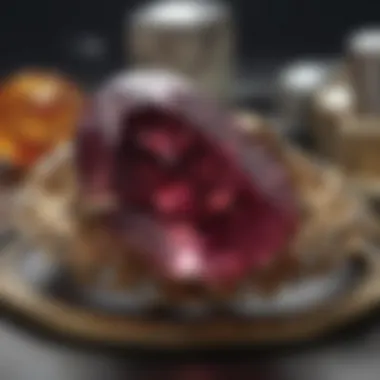
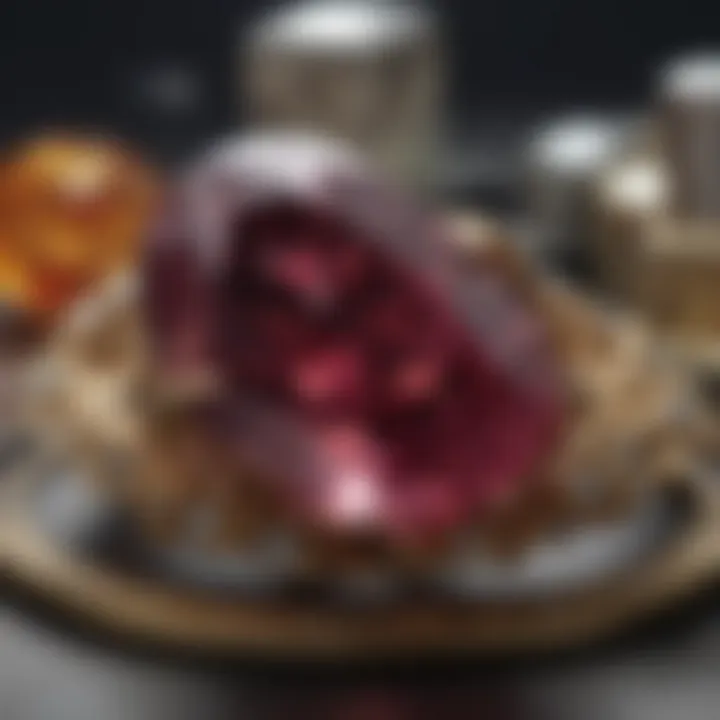
Earrings can come in various forms, such as studs or dangling options, catering to different tastes and preferences. However, one downside can be the risk of losing them if not securely fastened, so selection of a reliable backing mechanism is essential.
Necklaces
Necklaces utilizing the February birthstone are also quite significant. They can serve as a focal point of an outfit or provide a subtle accent depending on the design. A key characteristic of necklaces is their ability to convey personal style. A pendant featuring the February birthstone can tell a story or express an emotion.
The unique feature of necklaces is their length options, allowing for layering or standalone wear. One advantage is the ease with which they can be put on and removed. However, care must be taken with chains, as they can tangle easily.
Trends in February Birthstone Jewelry
The trends in jewelry incorporating the February birthstone are dynamic and continually evolving. Recently, there has been an increase in interest surrounding personalization, with many jewelers offering custom designs that reflect unique characteristics in their wearers. Adding engraving or selecting unique settings has become a preferred method for individuals to express their identities.
Moreover, sustainability is becoming a defining aspect in jewelry trends. Buyers are leaning towards ethically sourced gemstones and recycled materials. This trend aligns with a broader consciousness regarding the impact of mining and manufacturing on the environment. As a result, jewelry with February birthstone can serve as a conversation starter on sustainability and conscious consumerism.
Lastly, the rise of online shopping and social media platforms has transformed how consumers interact with jewelry designs. The visibility of various styles through platforms like Instagram can influence purchasing decisions, allowing consumers to stay informed about the latest trends.
Care and Maintenance of Gemstones
Taking care of gemstones is essential to maintain their beauty and integrity. For those born on February 29th, understanding the significance of the birthstone goes beyond its appearance. Proper care and maintenance ensure that these stones remain vibrant and undamaged over time. Factors such as daily wear, exposure to chemicals, and environmental conditions can affect a gemstone's longevity. Thus, both collectors and wearers must prioritize the right cleaning and storage methods to preserve their value.
Cleaning Techniques
Cleaning gemstones is a delicate process. It is important to use methods that will not damage the stone's surface or alter its color. Here are some proven techniques:
- Warm Soapy Water: For most gemstones, a simple solution of warm water and mild soap can work wonders. Use a soft cloth or a brush with soft bristles to gently scrub the surface. This method is safe for crystals like amethyst, which is the birthstone for February.
- Ultrasonic Cleaners: While effective, these cleaners may not be suitable for all stones. Some softer gemstones, such as opals, can suffer damage. Always check if your specific gemstone can tolerate this method before use.
- Steam Cleaning: This is a powerful method, but caution is advised. Like ultrasonic cleaning, it's not for all gems. Ensure your stone is durable enough for steam cleaning.
Remember: Regular maintenance ensures longevity. Avoid harsh chemicals and abrasive materials when cleaning.
Storing Gemstones Safely
Storage is just as crucial as cleaning. Proper storage keeps gemstones from scratches, breaks or general wear. Here are some best practices:
- Individual Pouches: Store each gemstone in its own soft pouch or fabric-lined box. This prevents them from coming into contact with one another and minimizes the risk of scratches.
- Avoid Direct Sunlight: Prolonged exposure to sunlight can fade some gemstones. A cool, dark space is optimal for their preservation.
- Temperature Considerations: Sudden temperature changes can crack or damage a gemstone. Maintain stable temperatures, and avoid extreme conditions.
In summary, caring for the February birthstone involves not only appreciation but also practical steps to maintain its beauty. By ensuring cleanliness and safe storage, enthusiasts can enjoy their gems for many years.
Ending
The significance of this conclusion is multifaceted in the context of the article. It serves as a final reflection on the complexities surrounding the birthstone for February 29th. Given that individuals born on this rare date often celebrate their birthdays every four years, their associated gem carries a unique narrative.
Recap of Key Points:
The following points summarize the most essential elements discussed throughout the article:
- Uniqueness of Leap Year Births: The rarity of February 29 births highlights the special nature of the associated birthstone.
- The Birthstone's Characteristics: The unique qualities of amethyst, a gemstone known for its vibrant purple hue, were explored in-depth, explaining its physical, metaphysical properties, and historical significance.
- Cultural Importance: Various cultures lend different meanings and symbolism to amethyst, linking it to calmness, clarity, and spiritual insight.
- Jewelry Applications: The versatility of amethyst in jewelry design offers options for personal expression and style, making it appealing for collectors and enthusiasts alike.
- Care and Maintenance: Proper care ensures that the beauty and durability of the gemstone are preserved for generations.
In recognizing these key aspects, readers can appreciate not just the beauty of the gemstone but also its rich history and cultural relevance.
Final Thoughts on February 29th Birthstone:
The birthstone associated with February 29th, amethyst, holds a distinct place not only in the realm of gemstones but also in the lives of those born on this day. For these individuals, it represents more than just a material object; it is a symbol of their unique existence and the stories they carry.
As we explore such themes, it becomes evident that acknowledging the significance of leap year births enriches our understanding of the broader cultural context surrounding gemstones. Individuals seeking deeper connections with their birthstone can benefit from its historical lore and metaphysical properties. Whether worn as jewelry or used in healing practices, the amethyst serves as a reminder of the distinctive identity of February 29th.
With a blend of knowledge and exploration, this article encourages appreciation for the exceptional nature of both the birthstone and those who bear its association. Individuals are urged to embrace their uniqueness and to understand the importance that such symbols hold in their lives.



